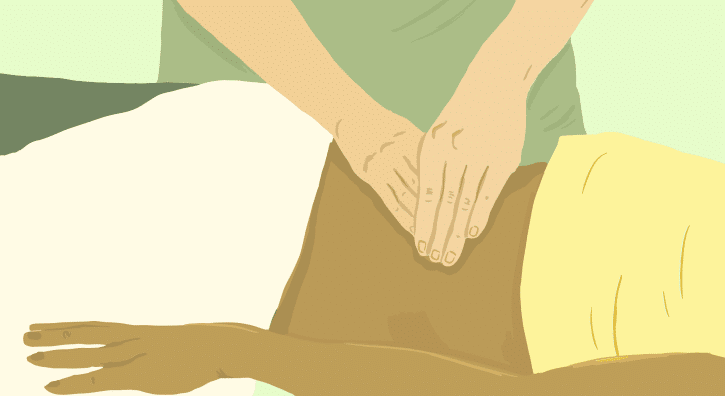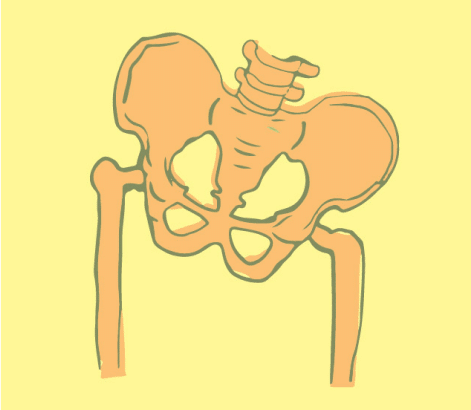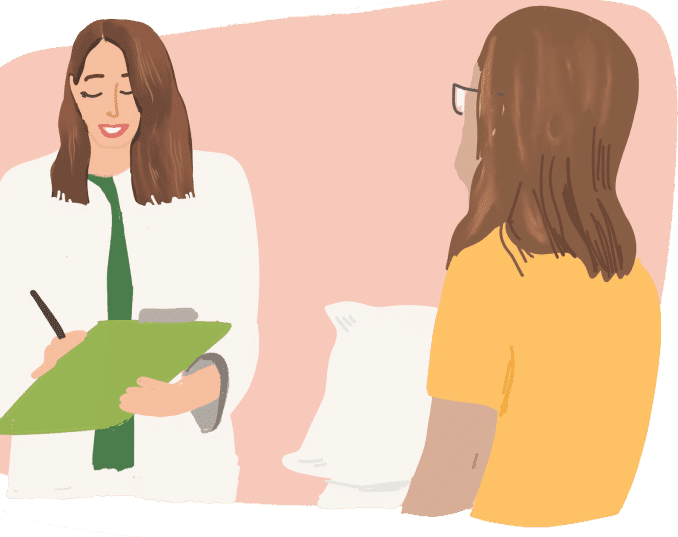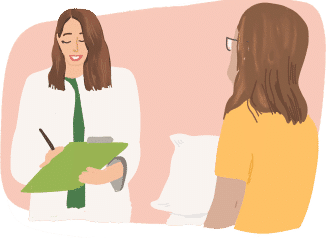

Sexual dysfunction can manifest in many forms, from diminished sexual desire and arousal issues to painful intercourse and trouble reaching orgasm. These experiences can feel isolating and frustrating, particularly when the underlying cause remains unclear. One often-overlooked factor in sexual health is the pelvic floor. These muscles play a crucial role in the body’s sexual response: in men, they contribute to the ability to maintain an erection, while in all individuals, they are responsible for the pulsing contractions associated with orgasm. When these muscles are not functioning optimally—whether due to weakness, excessive tightness, or lack of coordination—discomfort, numbness, or reduced pleasure can occur. These symptoms can lead to emotional stress and strain on relationships. Pelvic floor physical and occupational therapy can address these issues by identifying and treating the root muscular dysfunction, restoring comfort and confidence in intimate experiences.
The Facts
- Nearly one out of every three premenopausal women will experience pain during sexual activity at some point in their lives, making it a widespread issue that often goes unspoken.
- Erectile dysfunction is far from rare among younger men—with prevalence estimates ranging between 15% and 72% in those under 40, proving that age is not the only factor.
- Among men aged 40 to 70, more than half—roughly 52%—face challenges with erectile performance that can significantly affect intimacy and self-esteem.
- After undergoing prostate surgery, as many as 80% of men report a noticeable decline in erectile function, signaling a frequent side effect of this medical intervention.
- Approximately 60% of menopausal women admit that shame or embarrassment has kept them from discussing painful sex with a healthcare provider, contributing to delayed treatment.
- Hormonal birth control and certain dermatologic prescriptions, such as acne medications, have been linked to vulvar sensitivity and problems with natural lubrication.
- Around 65% of women continue to deal with pain during sex well into the postpartum period—sometimes as long as 18 months—demonstrating childbirth’s lasting effect on sexual comfort.
Sexual dysfunction can manifest in many forms, from diminished sexual desire and arousal issues to painful intercourse and trouble reaching orgasm. These experiences can feel isolating and frustrating, particularly when the underlying cause remains unclear. One often-overlooked factor in sexual health is the pelvic floor. These muscles play a crucial role in the body’s sexual response: in men, they contribute to the ability to maintain an erection, while in all individuals, they are responsible for the pulsing contractions associated with orgasm. When these muscles are not functioning optimally—whether due to weakness, excessive tightness, or lack of coordination—discomfort, numbness, or reduced pleasure can occur. These symptoms can lead to emotional stress and strain on relationships. Pelvic floor physical and occupational therapy can address these issues by identifying and treating the root muscular dysfunction, restoring comfort and confidence in intimate experiences.
The Facts
- Nearly one out of every three premenopausal women will experience pain during sexual activity at some point in their lives, making it a widespread issue that often goes unspoken.
- Erectile dysfunction is far from rare among younger men—with prevalence estimates ranging between 15% and 72% in those under 40, proving that age is not the only factor.
- Among men aged 40 to 70, more than half—roughly 52%—face challenges with erectile performance that can significantly affect intimacy and self-esteem.
- After undergoing prostate surgery, as many as 80% of men report a noticeable decline in erectile function, signaling a frequent side effect of this medical intervention.
- Approximately 60% of menopausal women admit that shame or embarrassment has kept them from discussing painful sex with a healthcare provider, contributing to delayed treatment.
- Hormonal birth control and certain dermatologic prescriptions, such as acne medications, have been linked to vulvar sensitivity and problems with natural lubrication.
- Around 65% of women continue to deal with pain during sex well into the postpartum period—sometimes as long as 18 months—demonstrating childbirth’s lasting effect on sexual comfort.
Symptoms
*Sexual Dysfunction in people with a penis
- Difficulties with achieving or maintaining an erection are common signs of erectile dysfunction and may include reduced firmness or an inability to sustain an erection through intercourse.
- Some individuals may also note a loss of ejaculatory force, where the release feels weak or absent altogether.
- A lesser-known symptom is climacturia—the involuntary leakage of urine during orgasm—which may signal pelvic floor weakness.
- Pain after ejaculation can arise in various areas, such as the tip or shaft of the penis, the testicles, or the space between the genitals and anus (perineum).
- Discoloration, such as redness or purplish skin changes around the genitals or perineum, may appear in conjunction with these issues.
Postpartum Sexual Dysfunction
- Hormonal changes linked to breastfeeding can drastically reduce vaginal lubrication, making intimacy uncomfortable.
- Perineal pain can persist due to healing from episiotomy incisions or tearing sustained during childbirth.
- Orgasmic difficulties—either in reaching climax or diminished sensations—are not uncommon after birth.
- Some experience leakage of urine during sexual activity or precisely at the moment of orgasm.
- Pain that lingers through or follows sexual intercourse may feel disheartening and hinder recovery.
*Sexual Dysfunction in people with vulvas/vaginas
- A decrease in natural vaginal lubrication can lead to dryness, irritation, and discomfort during sexual arousal or activity.
- Pain can occur with penetration—either at the entrance, deeper within, or throughout the entire sexual experience.
- The clitoris, typically a source of pleasure, may become overly sensitive or painful to the touch, suggesting nerve involvement.
- Burning or soreness after intimacy may linger for hours and be internal, external, or both.
- Some individuals report an inability to climax or find their orgasms significantly weakened.
- Some individuals report an inability to climax or find their orgasms significantly weakened.
- The release of urine during orgasm (climacturia) is another concern that often calls for pelvic floor therapy.
Menopausal Sexual Dysfunction and Post-gynecologic cancer treatment
- Decreased estrogen levels often result in a loss of vaginal lubrication, leading to friction and dryness.
- Penetrative sex can become extremely uncomfortable or even impossible due to heightened sensitivity or pain.
- Painful responses during or after sexual contact can last beyond the moment, sometimes continuing into the next day.
- Orgasms may become weaker, infrequent, or disappear altogether due to hormonal and nerve changes.
Symptoms
*Sexual Dysfunction in people with a penis
- Difficulties with achieving or maintaining an erection are common signs of erectile dysfunction and may include reduced firmness or an inability to sustain an erection through intercourse.
- Some individuals may also note a loss of ejaculatory force, where the release feels weak or absent altogether.
- A lesser-known symptom is climacturia—the involuntary leakage of urine during orgasm—which may signal pelvic floor weakness.
- Pain after ejaculation can arise in various areas, such as the tip or shaft of the penis, the testicles, or the space between the genitals and anus (perineum).
- Discoloration, such as redness or purplish skin changes around the genitals or perineum, may appear in conjunction with these issues.
*Sexual Dysfunction in people with vulvas/vaginas
- A decrease in natural vaginal lubrication can lead to dryness, irritation, and discomfort during sexual arousal or activity.
- Pain can occur with penetration—either at the entrance, deeper within, or throughout the entire sexual experience.
- The clitoris, typically a source of pleasure, may become overly sensitive or painful to the touch, suggesting nerve involvement.
- Burning or soreness after intimacy may linger for hours and be internal, external, or both.
- Some individuals report an inability to climax or find their orgasms significantly weakened.
- Involuntary leakage of urine during sex may result from weakened pelvic structures.
- The release of urine during orgasm (climacturia) is another concern that often calls for pelvic floor therapy.
Postpartum Sexual Dysfunction
- Hormonal changes linked to breastfeeding can drastically reduce vaginal lubrication, making intimacy uncomfortable.
- Perineal pain can persist due to healing from episiotomy incisions or tearing sustained during childbirth.
- Orgasmic difficulties—either in reaching climax or diminished sensations—are not uncommon after birth.
- Some experience leakage of urine during sexual activity or precisely at the moment of orgasm.
- Pain that lingers through or follows sexual intercourse may feel disheartening and hinder recovery.
Menopausal Sexual Dysfunction and Post-gynecologic cancer treatment
- Decreased estrogen levels often result in a loss of vaginal lubrication, leading to friction and dryness.
- Penetrative sex can become extremely uncomfortable or even impossible due to heightened sensitivity or pain.
- Painful responses during or after sexual contact can last beyond the moment, sometimes continuing into the next day.
- Orgasms may become weaker, infrequent, or disappear altogether due to hormonal and nerve changes.
Associated Diagnoses
Diagnoses such as Endometriosis, Vulvodynia, Interstitial Cystitis/Painful Bladder Syndrome, Pudendal Neuralgia, Chronic Pelvic Pain Syndrome/Male Pelvic Pain, Lichen Sclerosus, Lichen Planus, Pelvic Floor Dysfunction, post-prostatectomy complications, and Genitourinary Syndrome of Menopause are all associated with sexual dysfunction and pelvic pain.

Associated Diagnoses
Diagnoses such as Endometriosis, Vulvodynia, Interstitial Cystitis/Painful Bladder Syndrome, Pudendal Neuralgia, Chronic Pelvic Pain Syndrome/Male Pelvic Pain, Lichen Sclerosus, Lichen Planus, Pelvic Floor Dysfunction, post-prostatectomy complications, and Genitourinary Syndrome of Menopause are all associated with sexual dysfunction and pelvic pain.


Causes of Sexual Dysfunction
- Pelvic pain syndromes associated with pelvic floor dysfunction (above)
- Childbirth
- Medications
- Obesity
- Cardiovascular disease
- Menopause
- Jelqing
- Genital mutilation, genital cutting
- Surgically-induced
- Pelvic Floor Reconstruction
- Prostatectomy
- Gender affirming surgery
- Episiotomy
- Vestibulectomy
- Pudendal Nerve Decompression
- Mesh excision
Causes of Sexual Dysfunction
- Pelvic pain syndromes associated with pelvic floor dysfunction (above)
- Childbirth
- Medications
- Obesity
- Cardiovascular disease
- Menopause
- Jelqing
- Genital mutilation, genital cutting
- Surgically-induced
- Pelvic Floor Reconstruction
- Prostatectomy
- Gender affirming surgery
- Episiotomy
- Vestibulectomy
- Pudendal Nerve Decompression
- Mesh excision

Diagnostic Challenges
Despite growing awareness of its significance, sexual health is still too often overlooked in standard medical conversations. Many healthcare professionals receive minimal training on how to approach these sensitive topics and may lack the confidence to initiate discussions. At the same time, patients frequently remain silent out of fear of being judged or misunderstood, particularly within environments that aren’t welcoming or inclusive. This is especially true for LGBTQ+ individuals, who continue to face disparities in access to affirming care and are often left feeling marginalized. At PHRC, we are committed to breaking this cycle. Our clinic fosters a supportive, respectful space where every person feels safe discussing their concerns. We recognize that sexual health is a valid and essential part of well-being and that true care must take into account both the body and the mind. Our interdisciplinary model brings together medical evaluation, pelvic floor physical and occupational therapy, and mental health support to address the full spectrum of sexual wellness, empowering our patients to thrive in all aspects of their lives.
Diagnostic Challenges
Despite growing awareness of its significance, sexual health is still too often overlooked in standard medical conversations. Many healthcare professionals receive minimal training on how to approach these sensitive topics and may lack the confidence to initiate discussions. At the same time, patients frequently remain silent out of fear of being judged or misunderstood, particularly within environments that aren’t welcoming or inclusive. This is especially true for LGBTQ+ individuals, who continue to face disparities in access to affirming care and are often left feeling marginalized. At PHRC, we are committed to breaking this cycle. Our clinic fosters a supportive, respectful space where every person feels safe discussing their concerns. We recognize that sexual health is a valid and essential part of well-being and that true care must take into account both the body and the mind. Our interdisciplinary model brings together medical evaluation, pelvic floor physical and occupational therapy, and mental health support to address the full spectrum of sexual wellness, empowering our patients to thrive in all aspects of their lives.
Treatment:
How We Can Help You

Dealing with sexual dysfunction can feel overwhelming, but for individuals in Temecula, pelvic floor physical and occupational therapy has become a trusted and effective solution. If you’re unsure whether your pelvic floor may be involved in your symptoms, we recommend starting with a personalized evaluation. During this session, your therapist will gather detailed information about your medical background, previous treatments or diagnoses, and current challenges. We’ve had the privilege of helping many Temecula residents who felt overlooked or dismissed by others, and we take pride in delivering the attentive, expert care they deserve. The physical examination will look at muscle function, tissue health, joint movement, nerve response, and posture. Your therapist will walk you through their findings and design a plan of care that typically involves one or two sessions each week over the course of several months, along with exercises to complete at home. If needed, we also collaborate with your other healthcare providers to deliver fully integrated care. Our goal is to help you regain control over your health and rediscover comfort and confidence in every area of your life.

Treatment:
How We Can Help You
Dealing with sexual dysfunction can feel overwhelming, but for individuals in Temecula, pelvic floor physical and occupational therapy has become a trusted and effective solution. If you’re unsure whether your pelvic floor may be involved in your symptoms, we recommend starting with a personalized evaluation. During this session, your therapist will gather detailed information about your medical background, previous treatments or diagnoses, and current challenges. We’ve had the privilege of helping many Temecula residents who felt overlooked or dismissed by others, and we take pride in delivering the attentive, expert care they deserve. The physical examination will look at muscle function, tissue health, joint movement, nerve response, and posture. Your therapist will walk you through their findings and design a plan of care that typically involves one or two sessions each week over the course of several months, along with exercises to complete at home. If needed, we also collaborate with your other healthcare providers to deliver fully integrated care. Our goal is to help you regain control over your health and rediscover comfort and confidence in every area of your life.
How Can We Help You?
Please use the form below to send us any questions or comments. You must include your e-mail address in order for us to send a response. Please be assured that all of your information will be kept confidential.

Join The Newsletter. Win a copy of our book, “Pelvic Pain Explained!”
We love getting to know our website visitors. Please tell us a little bit about yourself and get the latest info via PHRC e-newsletter!
*Subscribers automatically eligible to win our book, “Pelvic Pain Explained.”
Pelvic Pain Explained offers a powerful look into the realities of living with chronic pelvic pain. Through firsthand stories and expert insight, it explores the frustration of misdiagnoses, the limits of standard treatments, and the emotional toll of seeking answers in a healthcare system that often fails to understand. The book sheds light on the shared struggle between patients navigating persistent discomfort and clinicians working without clear guidance. It also examines how chronic pelvic pain can strain relationships and chip away at a person’s confidence and sense of agency.


